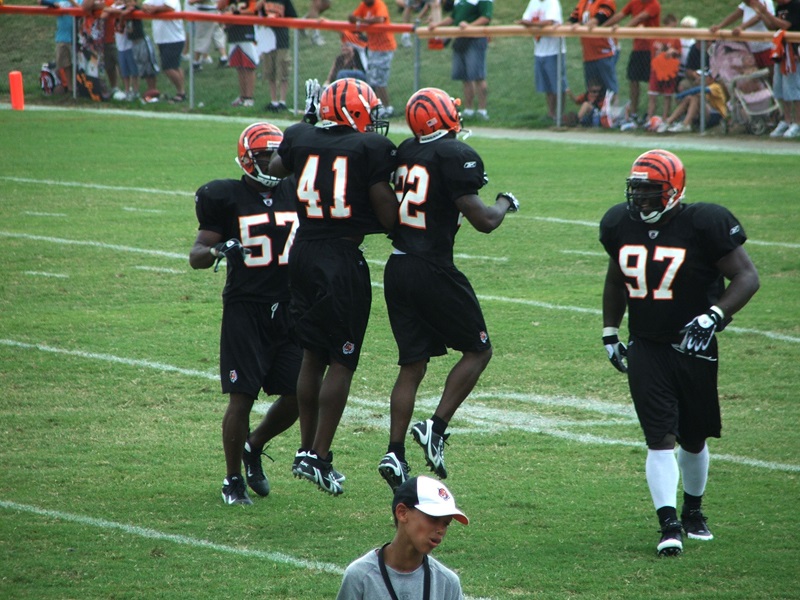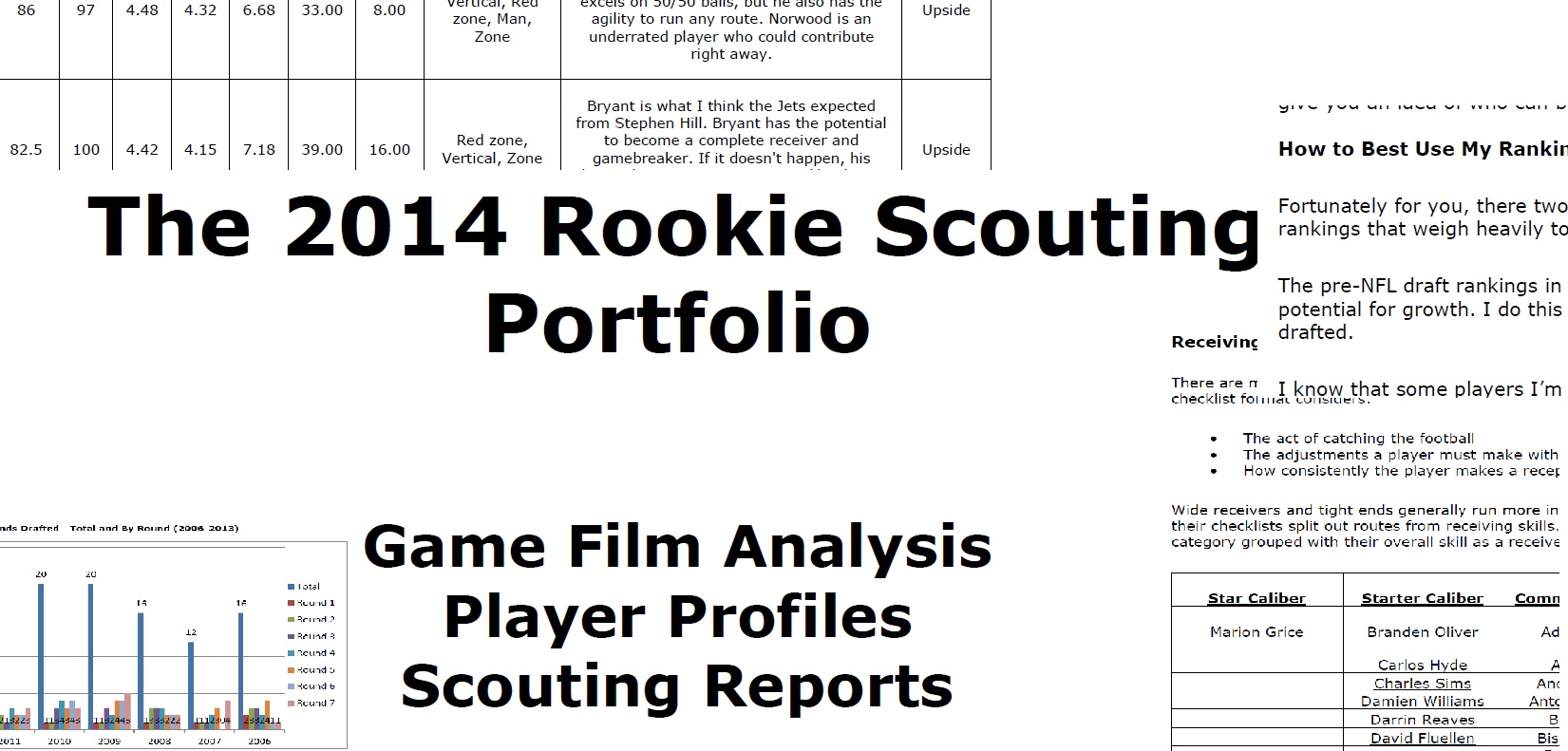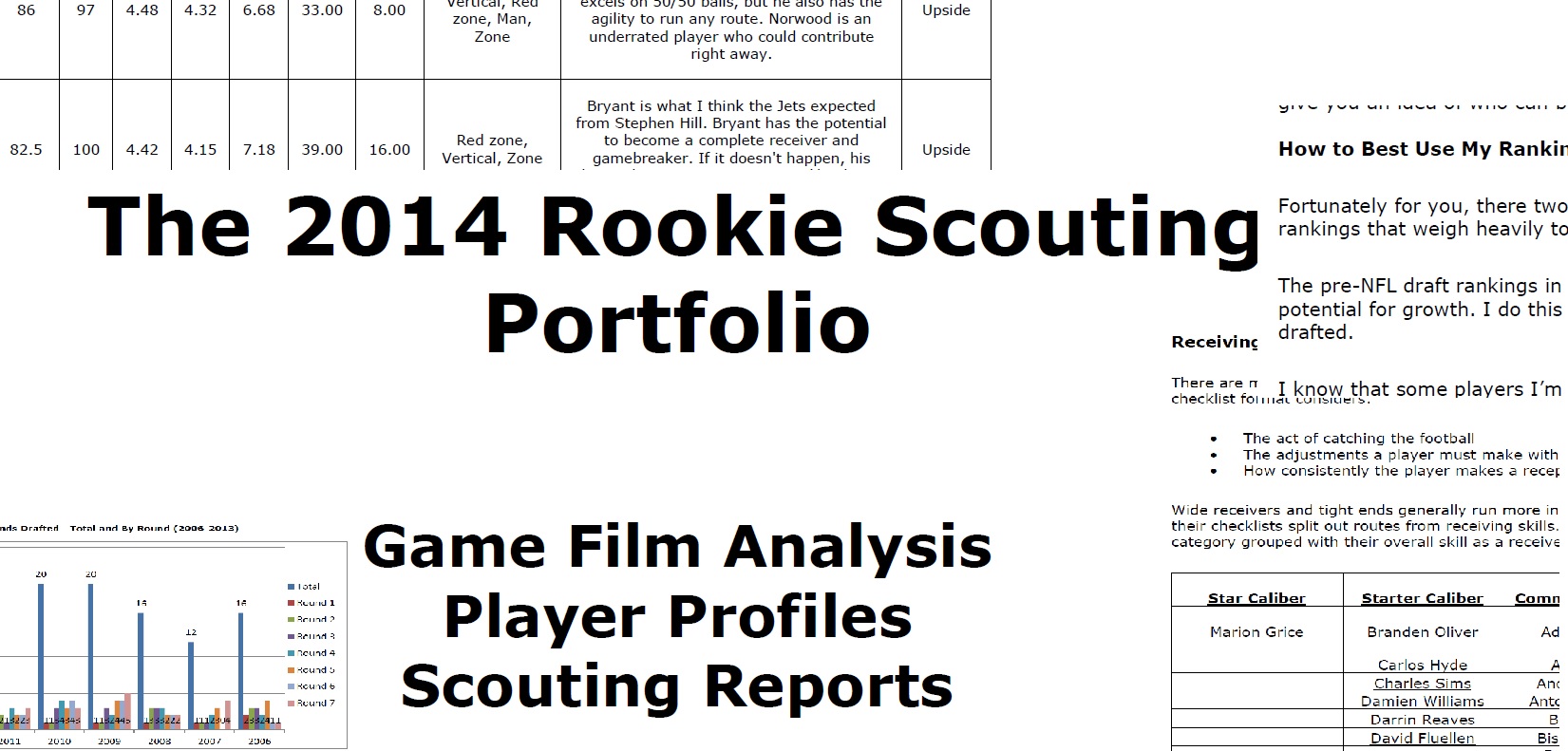
I see the good from Andre Williams, but will he show it often enough on the field?
I’m often asked about my “misses.” Who were they? What did I learn?
The answers aren’t always as simple as the questions. Sometimes the outcome is wrong, but the process is right.
Cincinnati running back Cedric Peerman hasn’t shown me anything contrary to my take on the rare occasions he gets to carry the football. The fact that Jay Gruden admitted that they didn’t know what they had in Peerman adds to my take that Peerman could have developed into a starter if given a true shot.
Sometimes the arriving at a decisive take on a player isn’t incredibly difficult–even with a defined methodology. There are prospects whose tape is enough of a mixed bag when it comes to pivotal components of their games that determine which examples should carry more weight is a tough call.
While it’s natural to worry about being “right” or “wrong” with the call, what I learn from the players who fall into the grey areas of my process helps me tighten it over time. These adjustments are more gradual than immediate, but the potential lessons of these difficult evaluations hold great value.
This isn’t what some people want to hear. They want immediate answers and instant adjustments.
I’m not into the fly-by-night; I’m an aspiring craftsman. I’m hoping there will be many years ahead of valuable lessons based on mistakes.
One of my not-so-simple misses is Anthony Dixon, one of my favorite backs in the 2010 NFL Draft. The runner from Mississippi State is a bruiser with the footwork and agility of a runner 20 pounds lighter than his 6’0″, 233-lb. frame.
[youtube=http://youtu.be/RjPpHxlSThk]
A sixth-round pick of the 49ers, Dixon has hung onto a roster spot thanks to his special teams play. However, the 26-year-old Dixon is unlikely to earn significant time as an NFL starter after failing to push Frank Gore for time on the San Francisco depth chart early in his career. One of the reasons that Dixon didn’t earn more chances is that he did not display consistent maturity as a decision maker.
The coaching staff expected its young runner to lower the pads and work downhill, but Dixon either bounced too many runs outside or displayed too much hesitation on plays designed to go between the tackles. The early take on Dixon is that he lacked the balance of decision-making maturity and creativity to solidify a spot in the offensive rotation early in his career.
Dixon has been pegged as a special teams performer and fullback-running back `tweener. He was a solid fit for Jim Harbaugh’s gap-style ground game, which wasn’t the predominant system during the Mike Singletary era. On rare occasions, fans saw Dixon earning time in Harbaugh’s backfield as big-lead closer.
Because Joique Bell, Alfred Morris, Knowshon Moreno, and Pierre Thomas aren’t extraordinary physical talents and they’re still making an impact ahead of more touted prospects, I wouldn’t be surprised if there’s more to come with Dixon’s story than what I mentioned above.
Even so, there is something I should have taken into account in hindsight: the Mississippi State ground game. The Bulldogs incorporated a lot misdirection with its run game in a gap-style offense: shotgun draws, counter plays, and traps.
[youtube=http://youtu.be/zvHPZi7_apk]
Although Dixon communicated a sound understanding of his keys at the line of scrimmage when I talked with him about his favorite plays at Mississippi State, the Bulldogs offense didn’t require sophisticated decisions from its backs. Dixon had to show just enough patience for one set of blocks to develop and make that destination of the run work. In most cases, Dixon’s physical skills were enough to earn yards after contact if Mississippi State failed to open wide lanes for its back.
Recently I went back to watch some of Dixon’s tape. I didn’t have the same impression of Dixon during my post-mortem analysis. The athleticism, power, and agility are all still there. However, I now see how the Mississippi State offense inflated my take of Dixon’s vision.
Where I missed on Dixon was his decision-making coming out school. Where I still may hit is his athleticism, burst, and balance if the decision-making has improved.
Funny enough, I wrote 90 percent of this piece and banked it in my archives well before Dixon earned a contract with the Bills and Mike Mayock announced his love for Boston College running back Andre Williams.
Williams is a big back like Dixon, but his evaluation has some difficult moments. The 6’0″, 227-pound Williams stars in a gap style ground game that loves to run traps, counters, and power. Both runners have enough quickness to move the chains, but neither shows the NFL speed to defeat a good angle from a defender in pursuit.
What adds complexity to this comparison contrast is that Dixon displays better athleticism on the field than Williams despite the fact that the Boston College back had an impressive combine. Williams’ physical skills don’t show up with the frequency that I expect from the top prospects at the position.
The professional market is too saturated with running backs who show more on a consistent basis for me to have as positive of a take on Williams as Mayock.
Even so, I like to explore the grey matter of my evaluations. Here are three plays that reveal glimpses of Williams’ best.
Power
Pair Williams in a power running game and the Boston College starter can get the job done. Here’s a 13-yard gain from a 23 personnel I-formation run against nine defenders in the box. The Eagles pulls its left guard to the right side and leads Williams to the hole behind his fullback.
[youtube=http://youtu.be/1lafGKn45VA?start=105]
Williams demonstrates some press-and-cut ability on this play. Ideally, I’d want to see Williams approach the hole outside the guard’s shoulder and then cut inside the guard at the line of scrimmage to exploit the hole opening to the inside.
Instead, Williams is positioned in the middle of the guard’s back. Yet it’s still a good enough spot for him to press the lane with a jab step to the outside shoulder and cut to the inside.
This move compels the defender on the pulling guard to peek outside and a beat late as Williams enters the hole inside the guard.
Williams gains three yards untouched through the hole and has some momentum to face the safety coming down hill and poised to deliver a shot to the runner’s legs. Williams’ knee level is high enough to repel the contact, maintain his balance, and earn another six yards before finishing the play coming over top of the defensive back making the tackle.
This is one of the better runs I’ve seen from Williams against contact where he doesn’t have a massive down-hill head start. Unfortunately, there aren’t many of them–even this one play doesn’t tip the scales for me over the wealth of plays where he’s unable to bully in tight spaces.
Here’s another nice press and cut from Williams from a heavy I-formation set.
[youtube=http://youtu.be/1lafGKn45VA?start=137]
Note the direction of the defense’s helmets after he executes the press and cutback. If Williams can make these cuts with this level of patience, agility, and burst more often in the NFL than he did at Boston College it will force me to re-examine how a small sample of plays can carry more weight despite being the exception to the rule in a player’s portfolio.
Speed
Williams’ difficulty opening his stride to reach that extra gear he showed at the combine limits his upside in the NFL. Here’s a play that would be a much bigger gain if Williams had elite speed for the NFL game. However, it’s a good example of enough speed to produce as a starter in the league.
[youtube=http://youtu.be/1lafGKn45VA?start=49]
As Williams reaches the flat, the safety has a bead on the running back. In this situation, Williams opens his stride enough that the safety cannot reach the runner at the eight-yard mark of the run.
Williams out runs this angle of the defender and earns another 16 yards beyond that safety’s original target trajectory. If not for the cornerback, Williams is off to the races.
But at this point, I have to stick with my take that Williams in pads doesn’t match his exploits in shorts. If not for Mike Mayock’s take likely reflecting the tenor of the NFL, I would have expected the Boston College starter to get a call in April as a late draft pick.
In the hyper-competitive world of professional sports and the perception-fueled environment of bloggers and fans, my assessment doesn’t sound complimentary. However, I remind you that for a player with an excellent mental-emotional approach to his career, the NFL Draft is only the beginning.
If the Boston College runner can demonstrate these skills with greater consistency, I’ll be eating my words. Of course, lessons like these offer plenty of nutritional value and build stronger bones for evaluation processes.
For analysis of skill players in this year’s draft class, download the 2014 Rookie Scouting Portfolio. Better yet, if you’re a fantasy owner the 56-page Post-Draft Add-on comes with the 2012 – 2014 RSPs at no additional charge and available for download within a week after the NFL Draft. Best, yet, 10 percent of every sale is donated to Darkness to Light to combat sexual abuse. You can purchase past editions of the Rookie Scouting Portfolio for just $9.95 apiece.











